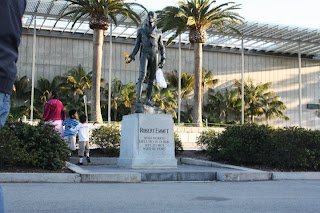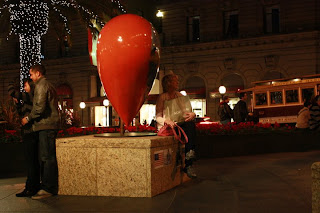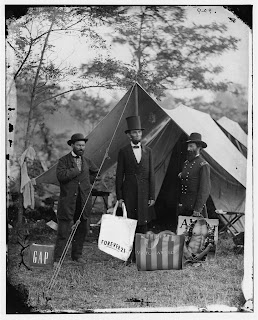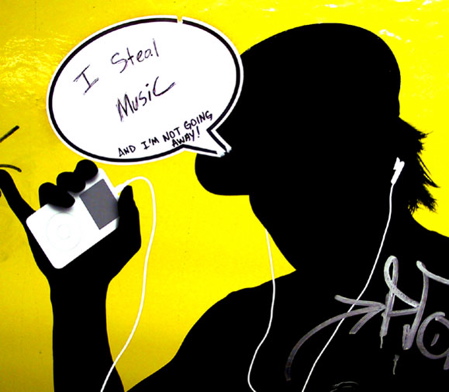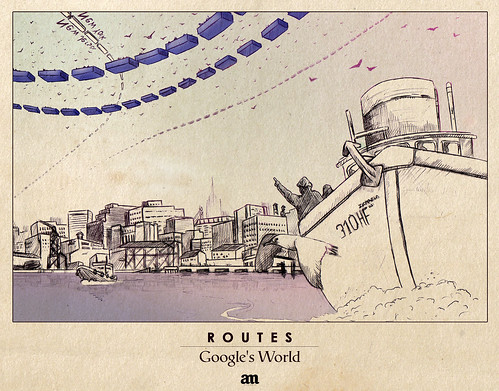Introduction
Def. of Promenade (n): “a leisurely walk or ride especially in a public place for pleasure or display.”
- Merriam Webster
Promenade is a place where one can watch other people, while being similarly watched. My improbable monument addresses this odd situation.
Background
Def. of Monument (n): "a lasting evidence, reminder, or example of someone or something notable or great." - Merriam Webster
“Monuments and memorials can be devices of detournement or slaps into consciousness.”
- Seeing in the Past in Present Tense
- Seeing in the Past in Present Tense
I wanted the viewers to be aware of my monument and remind them something, then questioned myself what I wanted them to remind and to be aware of. My desire was to have them to become aware of what I was aware of. This reminded me of how the people at the promenade dressed up to 'look nice and show off'; to be seen, while they are themselves looking at others similarly dressed. It is sort of game. And all engaged in such game extremely conscious of self and others, the promenade has become a show of superficial evaluation rather than just a “leisurely walk.” Personally, I felt very uncomfortable and uneasy to be watched from head to toe by strangers. It was as if I were an alien or a rare species of human.
However, people are not conscious of the frivolous superficiality dominating the environment, which they have become habituated to and therefore a part of.
Project Description
My monument would be placed in the middle of Third Street Promenade in Santa Monica , L.A.
The monument would be larger than life-size to outstand and attract people on the crowded promenade. The design is Art Deco style because Art Deco is ornamental, which only has an aesthetic aspect. Similarly, people on the promenade are very cosmetic. Thus, the style symbolizes the superficiality.
 |
| The original image of the monument. |
My monument would be stone or metal sculptures in white color, so that the projection can reflect on the surface of the sculptures.
The images of faces are projected on the sculptures’faces as seen in “Texas Big Face.” With the sensor system, the projected images of faces, especially eyes, follow as the pedestrians walk by. In addition to the images, a sound system would be installed right beneath the sculptures (inside of the foundation). The sculptures are able to make a sound of giggle, sigh, etc.
These effects would provide the viewers uneasy experience of being watched and evaluated.
People might be displeased with the monument. Since the sculptures are larger than life-size, they basically look down on the viewers. With the effects of the projection and sound, the monument aggrandizes feeling of discomfort of being watched in the space where people are to be seen.
However, this monument is improbable because of the environment. Even if it is at night, the promenade is decorated with hundreds of lights and too bright to project the images clearly. Also, the projection can’t be seen in day time when more people are on the promenade compared to night time. It would otherwise appear to the viewers that they are just ordinary sculptures on the promenade.
Benefits
The public would experience displeasing moment in a busy place like Third St. Promenade which is supposed to be a place to have leisure. Hopefully, the audience would realize that the monument is just reproducing a part of the activities happening on the promenade.
Timeline of tasks
If I could implement my proposal, I would first talk to people who have knowledge about projection and sensor system to discuss how I can install it on the promenade. This phase would take a while to figure things out in order to succeed. Then, I would work on making sculptures as working on the sound system installed on the foundation.







